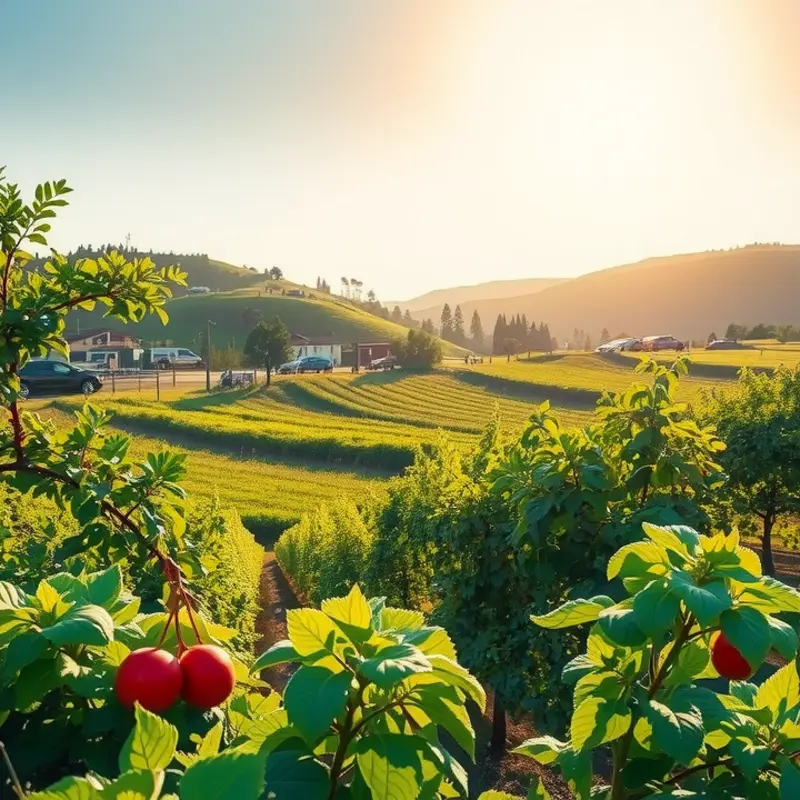Flavor layering is a culinary technique that can dramatically enhance your meals, creating a depth and complexity that turning a simple dish into something exceptional. Whether you’re a novice in the kitchen or a seasoned home cook, mastering this skill can make a significant difference. By understanding how to layer flavors effectively, you’ll be able to prepare dishes that are memorable and delicious, impressing both yourself and your dinner guests. Let’s dive into practical methods you can easily incorporate into your cooking routine.
Understanding the Basics of Flavor Layering

Embarking on the flavor layering journey involves mastering the interplay of ingredients. At its core, flavor layering is about building complexity and depth in your dishes through a thoughtful sequence of ingredient addition. This process enhances the overall taste and sensation of your meal.
Begin with understanding how different ingredients interact. Each component in a dish contributes unique qualities that can either harmonize with or overpower others. A key principle is to balance contrasting flavors, such as sweet and sour or salty and savory. This balance results in a harmonious dish that stimulates the palate without overwhelming it.
Take, for example, the classic pairing of balsamic vinegar and strawberries. The acidity of the vinegar intensifies the natural sweetness of the fruit, creating a more dynamic flavor experience. This balance can also be achieved by layering umami-rich ingredients, like mushrooms or aged cheese, with sweet elements, enhancing their savory notes.
Seasoning at various stages of cooking is crucial in flavor layering. Early seasoning allows ingredients to meld and develop over time, while finishing touches can brighten a dish. Salt, for instance, not only enhances flavor but also acts as a bridge between other seasonings, bringing out their best attributes. Consider when to use other seasonings like herbs or spices too—some release their aromas quickly, while others deepen with longer cooking.
Discovering which flavors complement each other is a key step in mastering this art. For example, pair the freshness of herbs with the complexity of spices to add a layered aroma and taste. Fresh basil can provide a clean contrast to earthy cumin, heightening the sensory profile of a dish.
To fully embrace flavor layering, treat herbs, spices, and other seasonings as tools to construct an intricate flavor profile. Begin with a base that provides a foundation of taste. Building up from there, incorporate mid-notes, which could include spices like cinnamon or smoked paprika for a warming effect. Finally, add top notes—citrus zest or fresh herbs—that introduce brightness and freshness.
Creating depth also involves understanding the function of ingredients as more than flavor agents. They can serve as textural contrasts—a crispy element like a frico can add a delightful crunch to a creamy soup. Such contrasts not only enhance flavor but also make dishes more enjoyable to eat.
Remember that simplicity does not exclude layering. Even minimal dishes can feature layered flavors when the ingredients are chosen and combined wisely. Consider flavor boosters without salt as an alternative to elevate your dish without overwhelming it with sodium.
As you explore flavor layering, don’t hesitate to experiment. Each try can reveal new combinations and surprises, leading to a deeper insight into this artistic culinary practice. Approach your kitchen like a canvas where the right mix of ingredients comes together to create a masterpiece of taste.
Practical Tips for Layering Flavors in Your Cooking

To truly elevate your cooking, mastering the art of flavor layering is essential. It begins with understanding the importance of building flavors from the ground up. Start by gently sautéing aromatics such as onions, garlic, and shallots. As they release their fragrances, they lay the foundation of flavor for your dish, providing a depth that permeates every bite.
Next, consider the role of acids. Ingredients like lemon juice, vinegar, or even wine, serve to brighten and balance. Acids counteract sweetness and enhance the overall flavor of the dish. A splash of vinegar can transform a sauce, while a squeeze of lemon can enliven a salad dressing, providing a fresh and complex taste.
Sweetness should not be overlooked in flavor layering. Ingredients such as honey, maple syrup, or even naturally sweet vegetables can balance the acidity or bitterness in a dish. For example, a tablespoon of honey in a tomato sauce can reduce acidity and create a more rounded flavor.
Herbs play a crucial role as well. Fresh herbs like basil, cilantro, or parsley should be added towards the end of the cooking process to maintain their vibrant flavors. Dried herbs, on the other hand, benefit from a longer cooking time, allowing their flavors to infuse more deeply into the dish.
Incorporating finishers, such as a drizzle of extra virgin olive oil or a sprinkle of sea salt, can also enhance flavor. These final touches add complexity, emphasizing the layers you’ve built throughout the cooking process.
For sauces and dressings, the simmering technique is invaluable. Gently reducing sauces ensures concentration without the risk of flavors becoming muddled. This method allows each ingredient to shine within the layered whole.
By meticulously layering flavors, you can transform even the simplest ingredients into a culinary experience. Practice these techniques consistently, and watch as your food evolves into complex, satisfying dishes that are both intriguing and gratifying to the palate.
Final words
Mastering flavor layering can truly elevate your cooking, transforming everyday meals into extraordinary experiences. By understanding the basics and putting practical techniques into action, you can enhance not only the taste of your dishes but also the joy of cooking itself. Each layer enhances the next, creating a symphony of flavors that will delight your palate. As you practice these methods, remember to experiment and have fun in the kitchen. Your culinary journey is personal, and with every dish, you are one step closer to being a more confident and skilled cook. Don’t hesitate to share the delicious results with family and friends!







